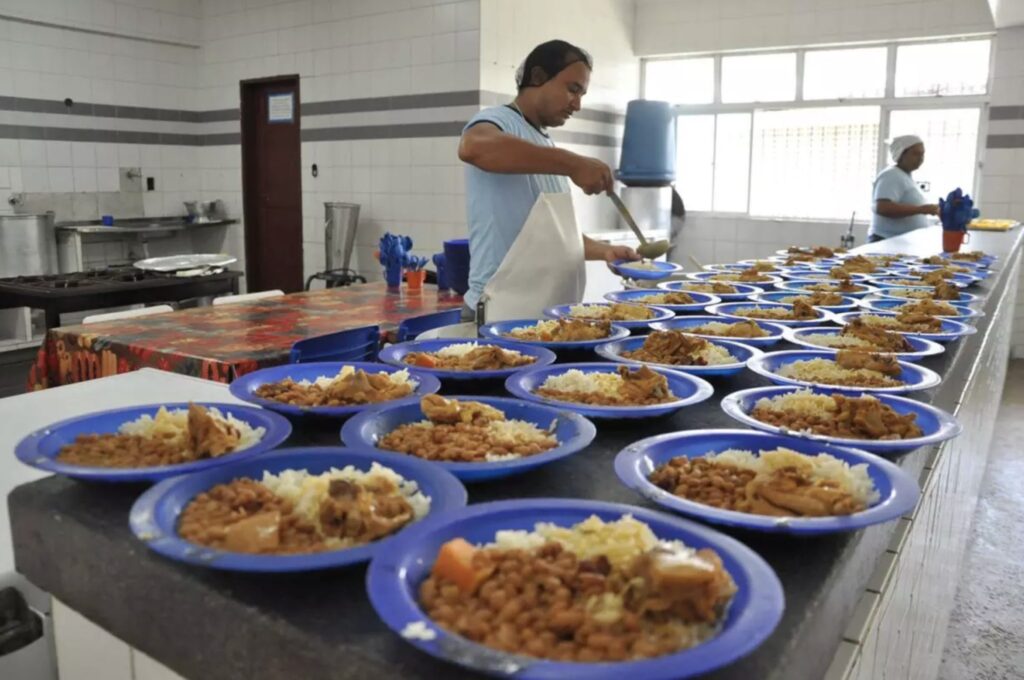Food & Climate
Climate change disrupts food and water supplies; however, it is clear that the companies, especially which their activities are junk food, are taking advantage of worsening environmental conditions to increase their profits. But Brazil’s fresh school meals protect students from these companies.
To stave off a major public health crisis, governments will have to double their efforts to make sure everyone has access to healthy food and clean water, according to an article seen by “Food & Climate” platform.
Over the last two decades, as climate change has grown worse, sales have skyrocketed in Colombia, with junk food companies heavily marketing their products to children.
In 2017, the country’s largest soft drink manufacturer gave free sugary fruit drinks to thousands of young people in La Guajira under the guise of ending malnutrition. As of 2020, children there still had a malnutrition mortality rate that was six times the national average, according an opinion article by Guest Essay, at “The New York times”.
He said: “Thanks to climate change, fresh foods are often hard to find, and even when you can find them, without water, it’s difficult to cook them, making packaged and fast foods more enticing. Higher temperatures also make fresh food spoil faster”.
The writer urged to ensure access to healthy foods and water, and said: schools are a great starting place.
Brazil’s fresh school meals
Brazil’s National School Feeding Program (PNAE), which provides meals to 40 million children every year, requires 75 percent of foods to be fresh or minimally processed; at least 30 percent have to come from small family farms.
The program has become a pillar of post-COVID efforts to keep kids fed and in school. It also provides economic opportunities for farmers and employment for some parents — benefits that officials hope will grow in coming years, according to “n p r”.
Brazil’s (PNAE) is one of the largest school meals programs in the world. Embedded in the country’s constitution, it’s a key part of the national strategy to combat hunger.
Between 2004 and 2013, a concerted effort to eradicate poverty helped slash the rate of Brazilian households facing hunger to 4.2% from the previous 9.5%. The progress during this period helped the country exit the World Food Programme’s Hunger Map in 2014.
When COVID-19 arrived, hunger came back worse than before, and Brazil was on the Hunger Map again in 2021.
According to a study conducted by the Brazilian Research Network on Food and Nutrition Sovereignty and Security, hunger affected 9% of homes in Brazil by the end of 2020, wiping out the gains of the early aughts. By 2022 the rate had reached 15.5% — adding 14 million people to the ranks of the hungry, for a total of 33.1 million.
In households with children under 10, those numbers are even higher, starting out at 9.4% in 2020 and nearly doubling, to 18.1% in 2022. For homes with three or more children under 18, the rate is 25.7%.
Now, as the country continues to recover from the pandemic, one of its main objectives is to strengthen the public policies that first took it off the Hunger Map.

Food security
While Brazil’s fresh school meals help students and their families, government is looking to double down on the country’s school feeding program, along with other efforts to alleviate post-pandemic poverty.
Brazilian President Luiz Inácio Lula da Silva announced in August the Brazil Without Hunger plan, a series of measures to help combat the hunger that had returned to the country.
They included boosting incomes through an updated social welfare program, increasing the national minimum wage and providing professional training. He reiterated the importance of the school feeding program and said it would be at the forefront of efforts to improve food security.
While public schools across the country are run by municipal and state governments, their meal programs are mostly paid for with federal funds. In March, President da Silva increased those payments by about 35%.
School menus have also been revised to promote both healthy eating and economic goals. Since 2009, a rule has required that at least 30% of federal funds go to produce supplied by small-scale or family farms, with preference given to local suppliers.
Brazil’s fresh school meals in Sao Paulo is important, so the government has set two goals: sourcing all school food supplies from producers who practice sustainable farming by 2026 and serving 100% organic meals by 2030.
At Professor Lourdes Heredia Mello Municipal School In São Paulo, one day’s menu includes pasta with fresh tomato sauce. There’s also tuna with vegetables and kale salad. Apples are this day’s dessert at the school.

